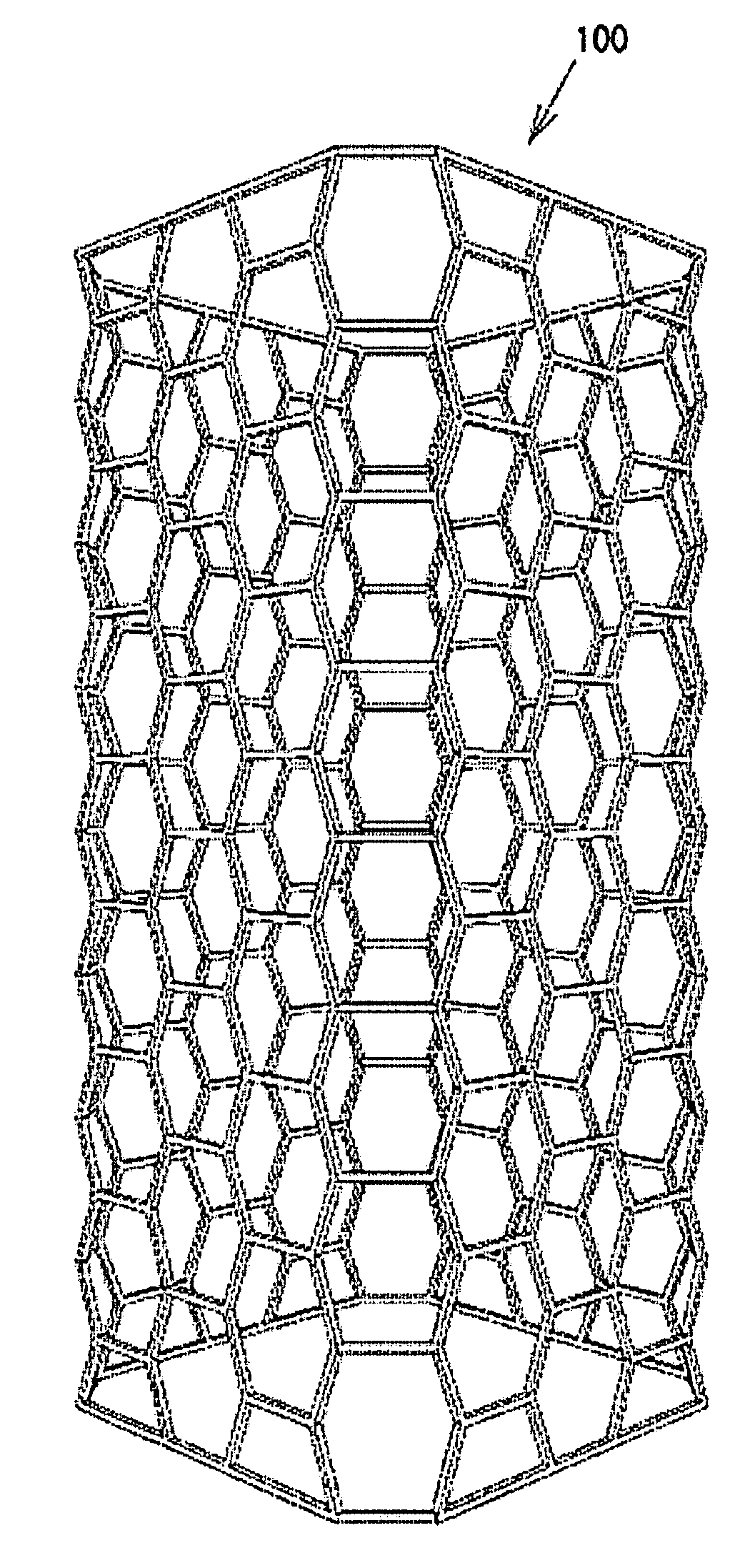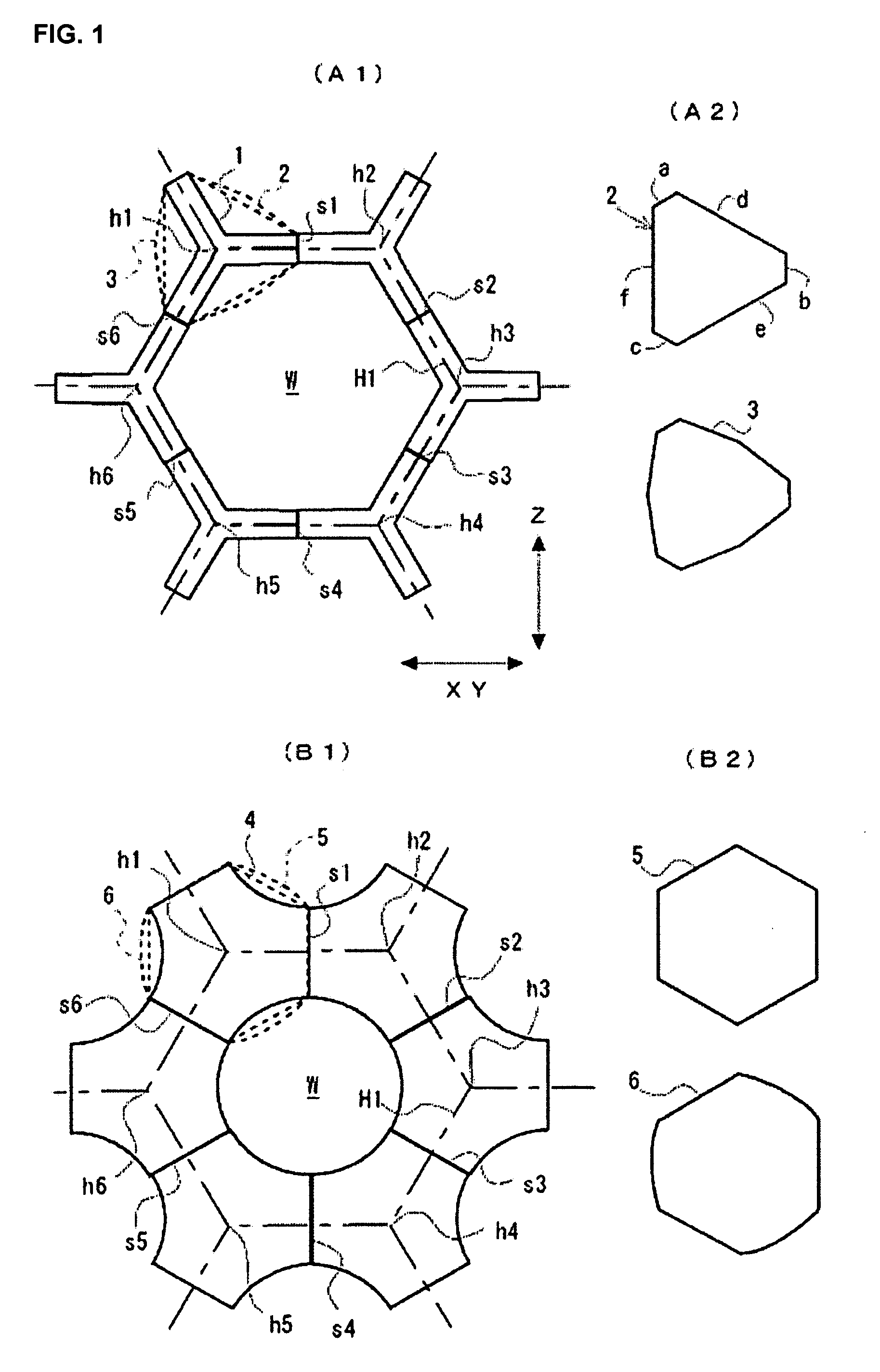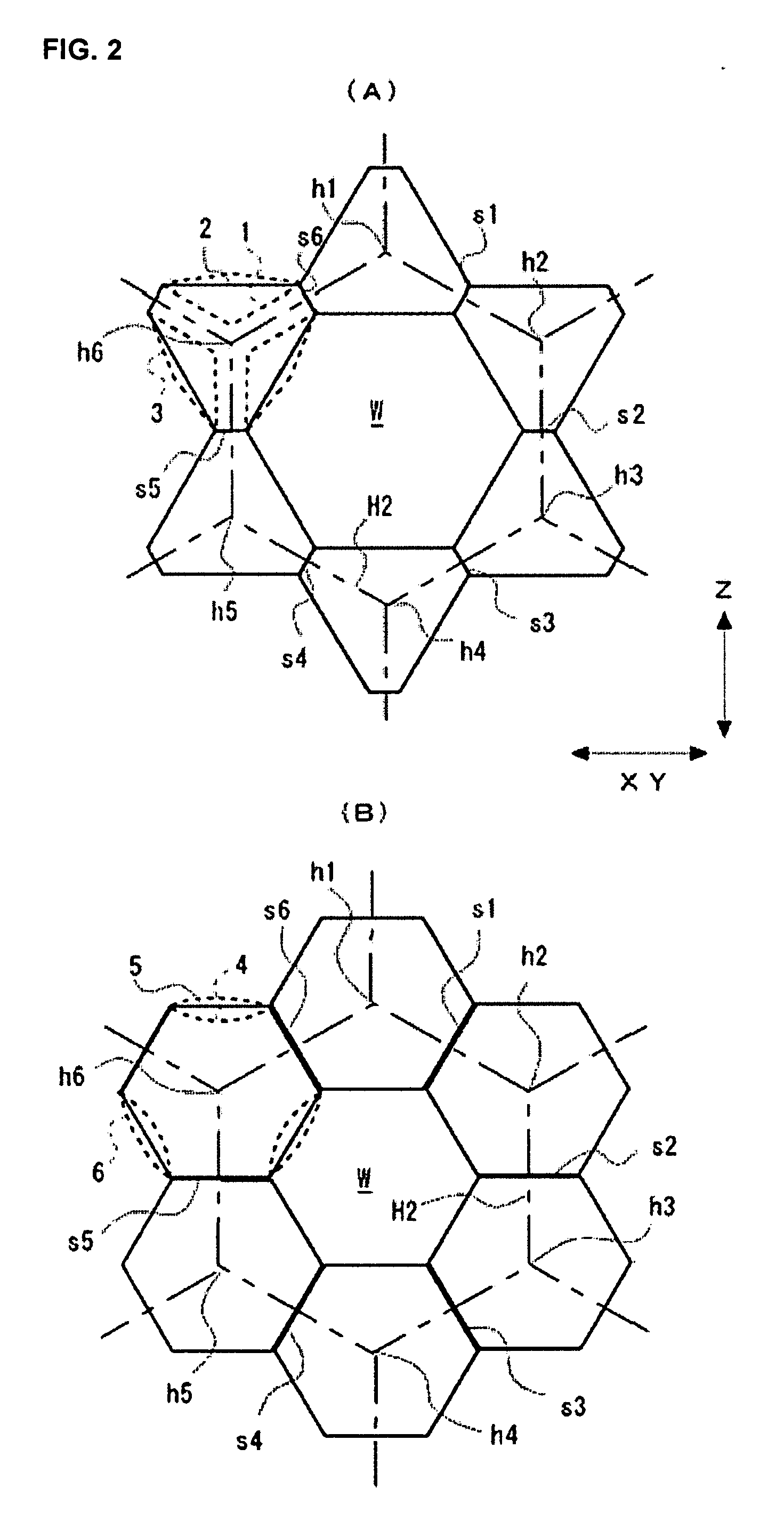Architectural Structure, Structural Unit and Method for Constructing the Same
a technology for building structures and structures, applied in the direction of buildings, buildings, constructions, etc., can solve the problems of not being able to use this structure, and not being able to provide a tube frame, so as to improve the workability of construction, reduce the work load, and increase the size and weight
- Summary
- Abstract
- Description
- Claims
- Application Information
AI Technical Summary
Benefits of technology
Problems solved by technology
Method used
Image
Examples
example 1
[0147]By making reference to FIGS. 7 to 14, examples of architectural structures having a main frame formed by connecting structural units that are disposed in a virtual honeycomb configuration will be described.
[0148]FIG. 7(A) to (C) show an example of the main frame of the architectural structure constructed by using the structural units 1 having a trifurcated shape shown in FIG. 1, (A) is a perspective overview of a tube frame 100 that serves as the main frame. (B) is an enlarged front view of a part of the tube frame 100 of FIG. 7(A). (C) is a top view.
[0149]The tube frame 100 shown in FIG. 7(A) is constructed in accordance with the virtual honeycomb configuration formed from the hexagonal cells H1 as the unit cells shown in FIG. 1, and the virtual honeycomb configuration as a whole has a tubular shape. The axis of the tube extends in the vertical direction. In case the trifurcated unit 1 is used as the structural unit to be disposed on the virtual honeycomb configuration, the m...
example 2
[0186]By making reference to FIGS. 15 to 21, another example of an architectural structure having a main frame formed by connecting structural units that are disposed in a virtual honeycomb configuration will be described.
[0187]FIG. 15 is a front view showing a part of a main frame 102 of the architectural structure formed by using the structural units, for example, a part of a tube frame similar to that shown in FIG. 7(A). FIG. 16 is a partially enlarged perspective view of the main frame 102 shown in FIG. 15.
[0188]The main frame 102 shown in FIG. 15 is constructed by connecting the structural units 2 shown in FIG. 1 that are disposed for the virtual honeycomb configuration formed from the hexagonal cells H1 (indicated by thick alternate dot and dash line) as the unit cells shown in FIG. 1.
[0189]The unit 2 has a hexagonal panel with six sides as shown in FIG. 15 in front view, and has a predetermined thickness (in the direction perpendicular to the paper of drawing). In other words...
example 3
[0215]By making reference to FIGS. 22 to 25, another example of an architectural structure having a main frame formed by connecting structural units that are disposed in a virtual honeycomb configuration will be described.
[0216]FIG. 22 is a front view showing a part of a main frame 103 of the architectural structure formed by using the structural units, for example, a part of a tube frame similar to that shown in FIG. 7(A). FIG. 23 is a partially enlarged perspective view of the main frame 103 shown in FIG. 22.
[0217]The main frame shown in FIG. 22 is constructed for the lower portion K1 by connecting the structural units 5 shown in FIG. 2 that are disposed in the virtual honeycomb configuration consisting of the hexagonal cell H2 (indicated by thick alternate dot and dash line) shown in FIG. 2, and connecting the structural units 4 shown in FIG. 2 for the upper portion K2. The unit 5 has an equilateral hexagonal panel surface as described for a modification of the unit 2 with refere...
PUM
 Login to View More
Login to View More Abstract
Description
Claims
Application Information
 Login to View More
Login to View More - R&D
- Intellectual Property
- Life Sciences
- Materials
- Tech Scout
- Unparalleled Data Quality
- Higher Quality Content
- 60% Fewer Hallucinations
Browse by: Latest US Patents, China's latest patents, Technical Efficacy Thesaurus, Application Domain, Technology Topic, Popular Technical Reports.
© 2025 PatSnap. All rights reserved.Legal|Privacy policy|Modern Slavery Act Transparency Statement|Sitemap|About US| Contact US: help@patsnap.com



